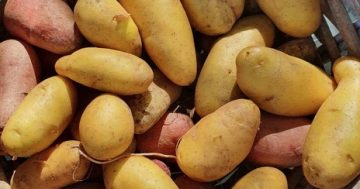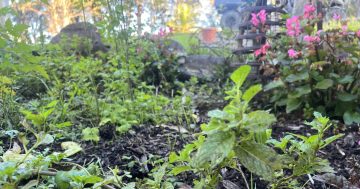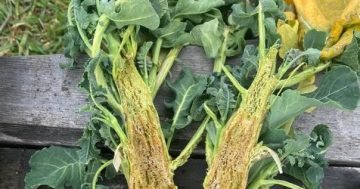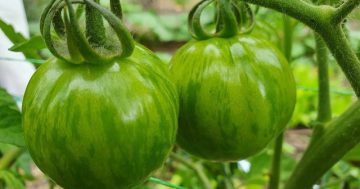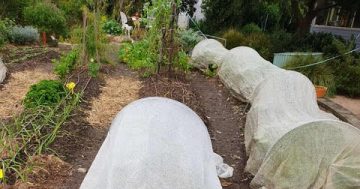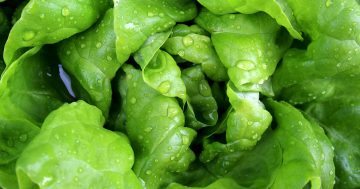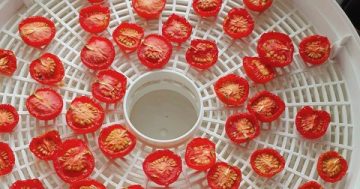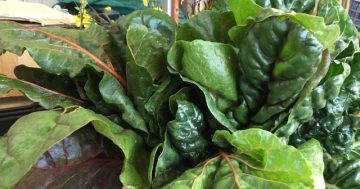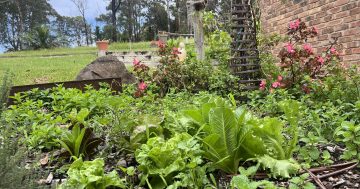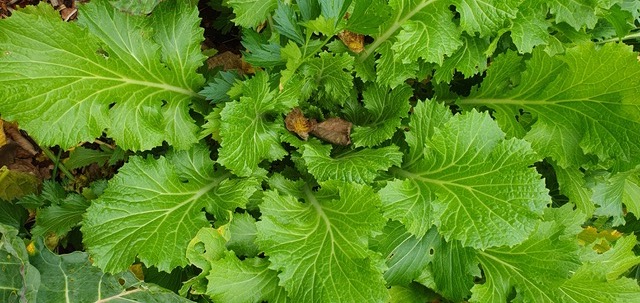
Asian greens are powering in the cool winter temperatures. Photo: Supplied.
The vegetable garden has made it all the way to winter’s start, with only the green tomatoes as casualties of the recent cold snap. They are in the pot right now, becoming green tomato chutney, delicious!
It’s been surprising how long the tomatoes have lasted, especially if grown under agricultural cloth or in a hot house. Most of us still have tomatoes ripening on a windowsill somewhere in the house.
As the cold and frost have arrived, all remnants of summer crops can be removed from the garden. Vegetable plant waste, including dried vines and potato stalks, can be composted or used to cover any bare soil in the garden but discard any fungus-infected leaves.
Also, prepare the soil and its ecosystem of insects, grubs and microbes for winter. Apply one of the key principles of organic and regenerative horticulture and treat the soil as a living thing.
Feed the soil and its ecosystems, and ensure that the soil life is also kept warm and happy through winter.
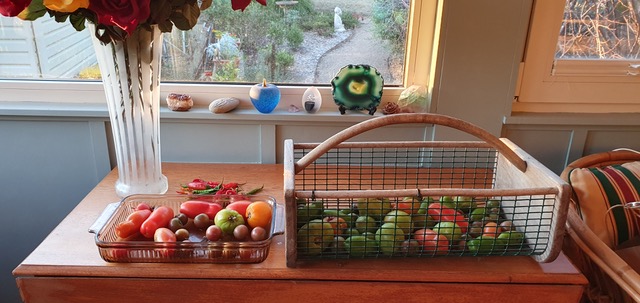
A late tomato harvest can ripen inside or turn into chutney. Photo: Supplied.
The worst thing we do in winter is to leave the soil bare. Bare soil becomes very cold and is affected by frost. This directly impacts soil life, slowing down all microbial activity. To maintain soil activity and life through winter, mulch or grow plants.
Mulch keeps winter soils at a cool but even temperature as it traps moisture and prevents the winter sun from reaching the soil. This is great for your now-dormant potato crop, which stays in the ground for winter storage.
Mulch denies sunlight and heat to the ground, helping potatoes stay dormant and not get tricked into shooting during sunny, warm winter weather. The other significant benefit is that it decomposes, providing organic material and nutrients to the soil.
Winter is a great time to grow a green manure crop. Green manure crops won’t be harvested but given back to the soil to build up organic matter and nutrients and stimulate biological activity. They are a fast annual growing crop.
Several cool-season green manure mixes can be purchased, including turnips, radish, lucerne, vetch, fava/broad beans, barley, oats, wheat and others. A broadcast sewing method is used, scattering seed by hand across the cultivated ground and then lightly covering or raking in.
Allow a minimum of eight weeks for the green manure to grow. Cut it about 20 cm high (a mower is great); lightly turn it into the soil and leave it for at least six weeks to decompose.
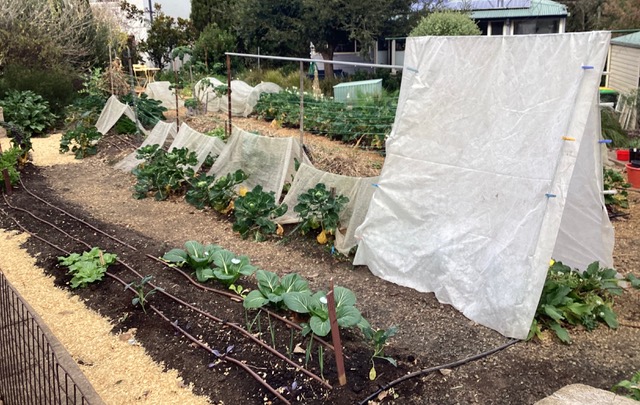
Winter crops benefit from shelter. Photo: Supplied.
Alternatively, keeping your garden beds full of growing vegetables will also provide a living mulch throughout winter. The soil is too cold now to sow seeds directly in the ground but planting can continue with seedlings.
Vegetable planting now will benefit from some type of protection from frost. Covering with a permeable agricultural frost fabric (shade cloth with a 40 per cent to 60 per cent shade rating is suitable) and using a simple frame to hold the fabric in place is well worth the effort.
This will support the plants to better survive continuous frosts and keep growing slowly over the next few months. But be careful to strongly secure your covers when the August winds arrive.
Planting now will give you vegetables to eat in spring. Seedlings will take two to six weeks longer to reach maturity than in other seasons. Seedlings of the large Brassica family may take between 16 and 20 weeks to grow to harvestable size. Any warm winter days and warm early spring days will boost growth a little.
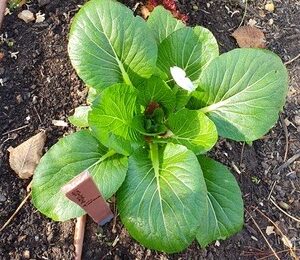
Flourishing Asian greens keep the vegetable garden productive during winter. Photo: Supplied.
Asian greens, winter lettuces, leeks, and English spinach can all be planted as seedlings now and should be at harvesting size in late winter to early spring. Asian greens grow really well – mizuna, mibuna, mustard greens and all the chois.
Joi Choi has been powering through late autumn in our garden, with their growth actually discernible over just a few days. Indeed the Choi family are a very hardy group of greens and well worth growing all year round.
Surprisingly, beetroot seedlings planted now will potter along slowly and can be eaten as baby beet in early spring. If you do nothing else this month, consider giving protected cultivation a try and see how it supports the growth of your winter greens.
Bronwyn Richards and Helen Lynch run Wynlen House Artisan Village Farm and Learning Centre, a small village organic market garden in Braidwood, NSW. Since 2006 they have grown and sold fresh vegetables, eggs, preserves and garlic and teach others to do the same.
Original Article published by Bronwyn Richards on Riotact.



